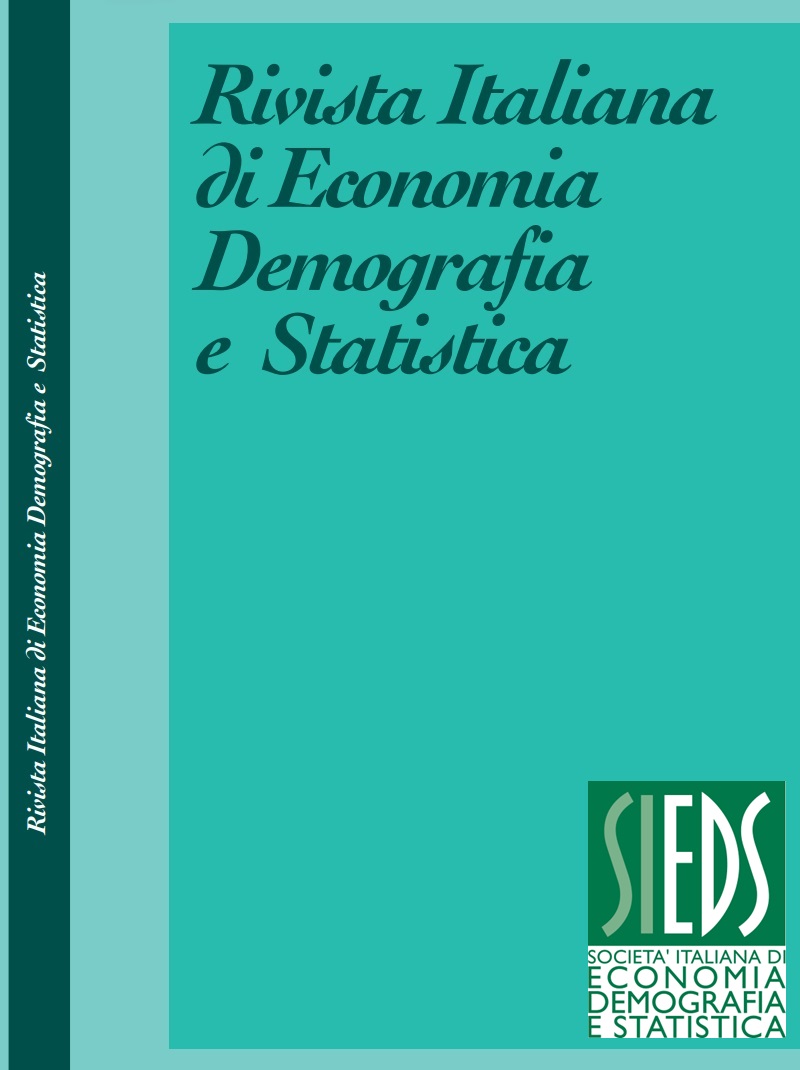The sanitary emergency impact on the composition between hours actually worked and short-time working allowance hours
Abstract
This work aims at analyzing the effect of the special government interventions, carried out to face the COVID-19 health emergency, on the composition between hours actually worked and short-time working allowance hours (Cig in Italian). Furthermore, the impact of the government measures on different types of enterprise activities has been taken into account (at NACE Rev.2 economic activity section level). The analysis carried out in this work have been based on the variables available from the Istat quarterly survey on job vacancies and hours worked (Vela) and the monthly Large Business Survey (GI). These sources of information, in addition to the hours worked broken down by ordinary, overtime and paid but not worked (such as holidays, festivity, etc.) hours quarterly collect data on the effectively used Cig hours, which include ordinary, extraordinary or derogating Cig hours and the solidarity contract hours. The information used in this work is in terms of the per capita quarterly hours, that are defined as the total amount of hours over a quarter (actually worked, Cig, paid but not worked hours) divided by the average number of employees. Changes in the composition have been focused by means of year-over-year changes and a comparison between the annual averages in 2020 and in the years before the COVID-19 emergency (2016-2019). The analysis has showed that quarterly dynamics of both the hours actually worked and the Cig hours follow the effect and the length of the government interventions, highlighted the exceptional recourse to the Cig with respect to the past years. In particular, in the first quarter of 2020, the effects of the pandemic and the consequential first lock-down mainly concerned the month of March and, therefore, had a more limited impact than that observed for the second quarter 2020, when the total lock-down lasted for about two months. As a result, per capita Cig hours in industry and services (NACE Rev. 2 economic activity sections from B to S) rose from 25.6 in the first quarter to 91.7 in the second; while per capita hours actually worked in the quarter fell from 339 to 278. In the third quarter of 2020, the improvement in the sanitary conditions and the consequential recovery of many economic activities led to a decrease in the use of the Cig, which fell to 28.5 per capita hours, and to an increase of the hours actually worked in the quarter, up to 330 per capita hours. In the fourth quarter of 2020, due to the second wave pandemic and the local lock-downs, the Cig per capita hours slightly increased (32 hours) while the actually worked ones slightly decreased (346). The work also analyzed the composition of the Cig per capita hours at the level of economic activity section (NACE Rev.2) and the changes compared to past years were highlighted.
Downloads
Published
Issue
Section
License
Copyright (c) 2021 Diego Chianella, Giuliano Latini, Annalisa Lucarelli, Emilia Matera

This work is licensed under a Creative Commons Attribution 4.0 International License.



